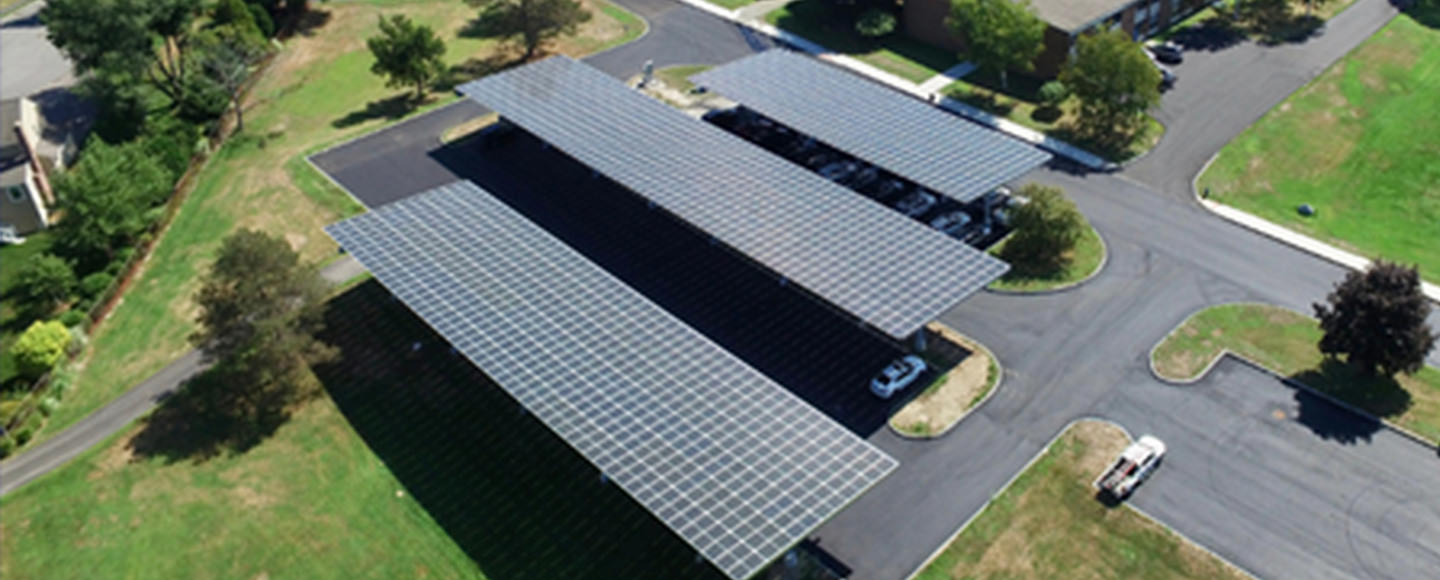For years, savvy businesses in Massachusetts have been transforming their parking areas into assets that reduce costs and generate revenue by installing solar carports. These elevated canopy structures with solar photovoltaic (PV) panels produce clean, renewable energy that can be used on-site or sent back to the grid.
Now, the financial decision of adding a solar carport is a no-brainer for business owners due to two major factors.
- You have probably noticed that the rising electric rates have impacted your electric bills. Low-cost renewable energy from a solar canopy on your property could protect your business’ bottom line from these volatile energy prices by providing power for your operations.
- The Inflation Reduction Act of 2022 increased the federal solar investment tax credit (ITC) to 30% and created bonus incentives including an additional 10% tax credit for using American-made parts. Since Solect Energy is able to source American-made parts for our solar canopy projects, certain projects are eligible for a total federal tax credit of 40%, 50%, or more! Think about it. A 40% tax credit on a $1,000,000 solar project investment translates into a $400,000 tax credit. That’s money that could be invested in other aspects of your business.
Additional Ways a Solar Carport Creates Real Value for Your Business
In addition to reducing the impact of sky-high utility rates and providing a huge tax credit, there are other ways that a solar carport creates real value for your business.
- The Solar Massachusetts Renewable Target (SMART) program, which compensates Massachusetts solar system owners through a monthly utility payment at a fixed rate over 20 years for the solar electricity they provide to the grid, offers an increased incentive award (an “adder”) for solar carports because of their efficient use of space. Note that the sooner you get into the SMART program, the better the rate that you secure due to the program’s declining block structure.
- A solar carport can be integrated with an EV-charging solution which provides convenient access to EV charging for employees and customers, and could help your organization comply with the Electric Vehicle (EV) Charging Station Building Standards in Massachusetts general laws and building regulations.
- Energy storage could be added to your solar carport installation to maximize renewable energy use, power critical loads during an outage, and reduce costly demand charges. This is an especially beneficial solution for Massachusetts ratepayers who experience some of the highest demand charges in the country. Plus, the SMART program offers an adder for battery storage too!
- A solar carport provides protection from the elements by shading vehicles on hot days, and sheltering employees and customers from rain, sleet, and snow. In addition, it could extend the life of the asphalt by protecting it from the elements.
- A solar carport improves the appearance of a parking area, and visually demonstrates your organization’s commitment to sustainability since the solar carport produces clean, renewable energy with no greenhouse gas emissions. Employees and customers value organizations with cultures that emphasize investing in the environment.
Solarize Your Parking Area!
Now is an especially good time to add a solar canopy to an existing parking area at your organization due to the compelling financial upside along with other tangible benefits. To learn more or to schedule a no obligation consultation with Solect Energy, click here or you can contact us by email info@solect.com, phone 855.800.4211 (press 1), or click on the button below.
July 29, 2023

